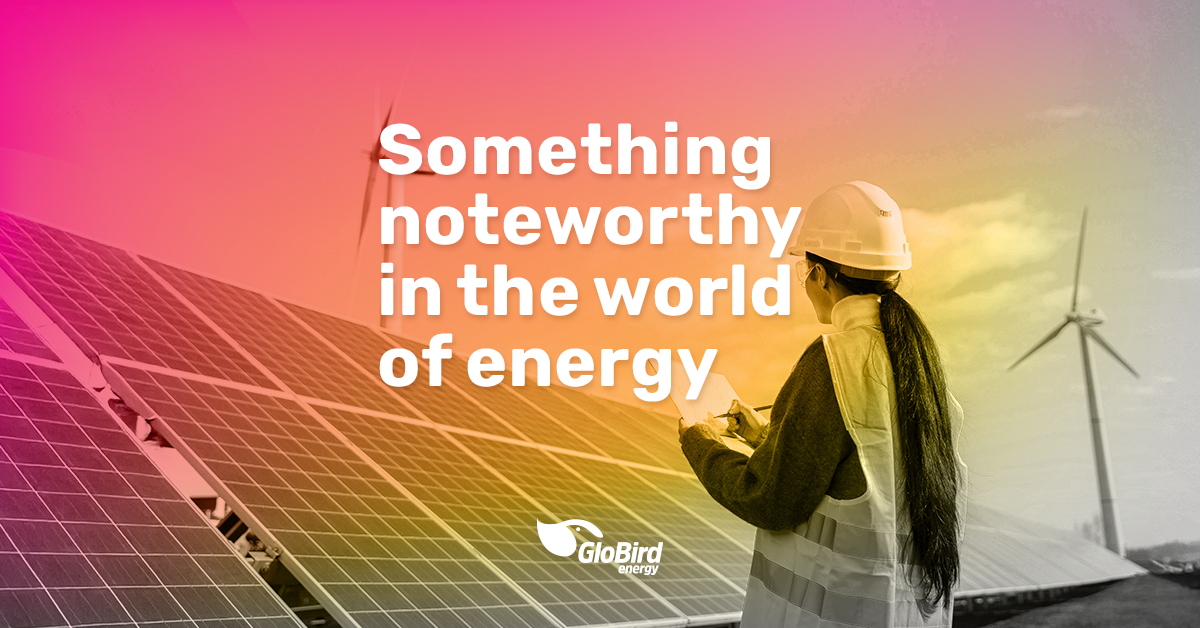Every day we read something about what’s happening in the energy market, either locally or globally.
Some of what’s written about is speculative and might never come to fruition, some is reported from or slanted toward a particular perspective or agenda (although that doesn’t always mean we take it with a grain of salt), and some is unremarkable, simply updating ‘business as usual’.
Then there are the milestones, breakthroughs, reports, and advances that are well worth knowing about. Here are some recent examples (in no particular order).
New wind and solar peak in WA
Western Australia’s South West Interconnected System, regarded as the biggest isolated grid in the world, hit a new penetration record for wind and solar power on Sunday, November 17.
The new peak of 85.7 per cent, at 1.40 pm local time, beat the previous record of 84 per cent.
Rooftop PV accounted for most of the output with a 73.5 per cent share of demand, with wind providing 10 per cent and grid-scale solar – most likely curtailed because of the competition from rooftop PV – accounting for less than one per cent.
While other grids have regularly reached higher wind and solar penetration – rooftop solar in South Australia accounted for more than 100 per cent of state demand over the weekend – because WA has no connections to other states, it can’t export excess output to other grids.
The WA grid has a relatively flexible system, largely due to its traditional reliance on gas. It’s also building a fleet of large batteries (including the biggest in the country at Collie) that will facilitate the redistribution of excess rooftop solar from the middle of the day to the evening peaks.
Australia’s rooftop solar milestone
Meanwhile, on November 14, the Clean Energy Council website reported: “Rooftop solar shines bright as Australia surpasses four million installations”.
It told us that “Australia has cemented its status as a world leader in rooftop solar, surpassing a remarkable milestone of four million rooftop solar installations across the country and slashing Aussie energy bills.”
Investment in renewable energy is strong
Three days earlier, the same source reported “A strong quarter for new investment in renewable energy and storage”, stating that “Over 1400 MW of new large-scale renewable energy generation projects, worth $3.3 billion in new investment, were committed in the third quarter of 2024, according to the Clean Energy Council’s latest Quarterly Renewables Report.”
The world’s largest onshore wind turbine is up and running
Chinese wind energy giant Sany Renewable Energy has reportedly powered up the world’s largest onshore wind turbine in northern China.
The 15-megawatt (MW) behemoth, capable of powering 160,000 households, boasts 131-metre blades and a rotor diameter of 270 metres.
The world’s largest offshore wind turbine is also in China, in Fujian Province. It has a diameter of 252 metres and can adjust its blades in real time to account for high winds. In September 2023, it produced enough energy in one day to power 170,000 homes.
Global investment in clean energy is on the up
Last month, the International Energy Agency (IEA) released its World Energy Outlook 2024 report.
It revealed that global investment in clean energy is approaching $US2 trillion – almost double the combined amount spent on new coal, oil and gas supply.
Clean energy is entering the energy system at an unprecedented rate, including more than 560GW of new renewables capacity added in 2023.
The IEA reported that Australia had seen a significant reduction in the use of fossil-fuelled power sources, with low-emissions electricity generation doubling between 2018 and 2023.
Fossil fuels aren’t done with yet
KPMG recently surveyed 1,400 senior executives across 36 countries and territories for its ‘The Energy transition investment outlook: 2025 and beyond’ report.
While it found that 72 per cent of investors said investment in energy transition assets is accelerating, “75 per cent are still engaging in fossil fuel projects, especially natural gas, recognising the role fossil fuels play in ensuring energy security as the transition continues”.
Meanwhile, the executives identified energy efficiency – including electrification – as the most attractive investment in the next two years (36 per cent), followed by renewable and low-carbon energy (34 per cent).
A review of Australia’s electricity pricing framework
On November 7, the Australian Energy Market Commission (AEMC) released a Consultation Paper for its comprehensive review of electricity pricing. This is the early but important stage of the AEMC’s effort to design a pricing framework that better serves Australian energy consumers.
The AEMC’s media release states: “Just as ride-sharing apps fundamentally transformed transport services, rapid technological change is reshaping how Australians use and pay for electricity. With solar panels, batteries, electric vehicles and neighbourhood batteries becoming commonplace, the AEMC is examining how electricity pricing needs to evolve”.
Record low electricity demand in Australia
Also just a couple of weeks ago, the Australian Energy Regulator (AER) released the State of the energy market 2024 report, a comprehensive review of the past year across Australia’s energy markets.
One significant finding was that consumers have become an even more integral part of the energy transition by continuing to invest in rooftop solar, battery storage, and electric vehicles. Residential solar in the National Electricity Market (NEM) now exceeds 20 gigawatts – 2.9 gigawatts more than last year.
The report highlights that, over the past year, wholesale electricity prices have eased from the extreme levels of 2022 but are increasingly volatile. Weather conditions and outages at both generator and network levels during high-demand periods contributed to the volatility. The market experienced record low electricity demand in New South Wales, Victoria, South Australia and Tasmania, but also record high demand in Queensland.
There’s a lot to digest in the AER’s annual report, so we might look into it more thoroughly in our next blog post.
